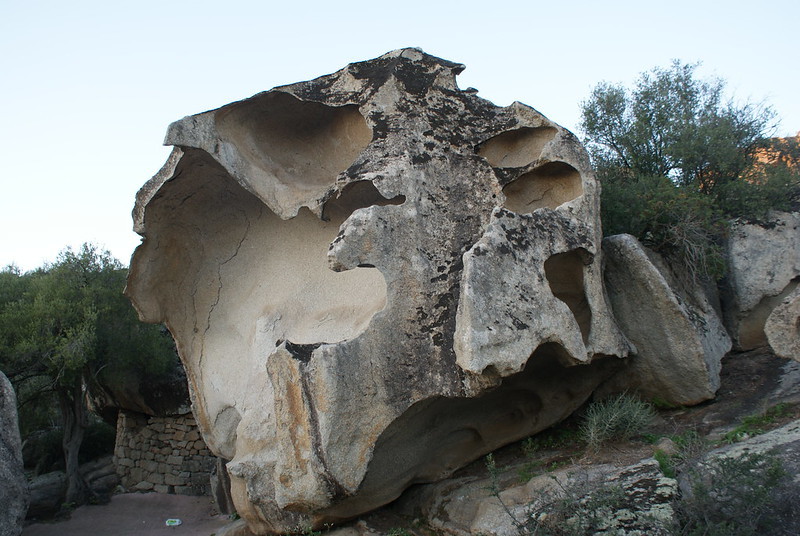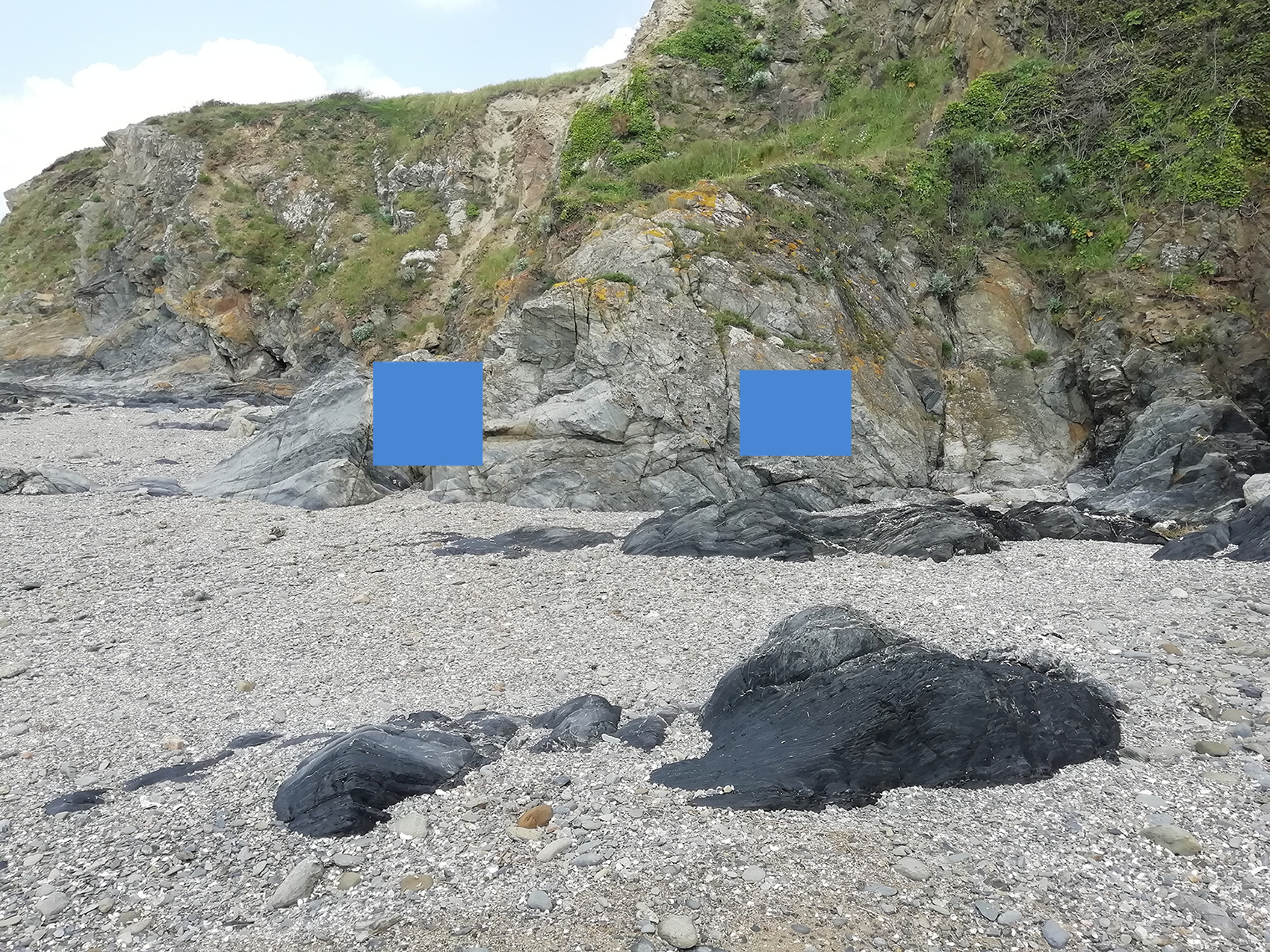
Plage du Fourneau - Taffoni ou nid d'abeilles ?

Attention la cache est accessible uniquement à marée basse !
Pensez à consulter les horaires de marées avant de venir sur place.
Un taffoni (ou tafoni) désigne en géomorphologie, une forme en creux arrondie, creusée sur une paroi nue de roches cristallines ou gréseuses. Les taffonis peuvent être trouvés dans toutes les régions du monde, mais ils sont particulièrement fréquents dans les zones maritimes, les zones arides et les déserts.

Processus de formation
La formation de ces cavités dans les roches est une conséquence de l'altération/érosion par les embruns subie par ces roches. Ces structures se mettent en place là où préexistent des fractures de la roche. Plusieurs processus combinés conduisent à la formation de ces structures :
- L'haloclastie : c'est un processus de désagrégation des roches lié à la cristallisation de solutions salines. Les solutions salines pénètrent la roche via les fissures, puis lorsque l'eau s'évapore, les sels cristallisent et exercent une pression importante sur les parois pouvant entraîner une désolidarisation des minéraux de la roche.
- L'hydrolyse : c'est un processus d'altération des minéraux des roches par l'eau.
- La thermoclastie : c'est un processus de désagrégation des roches sous l'effet de l'eau dans les fissures qui subit une dilatation thermique. Les variations de température créent localement une surpression.
- Les réactions chimiques entre minéraux : Les ions contenus dans l'eau de mer, réagissent avec les minéraux des roches, ce qui augmente l'altérabilité de la roche.
Taffoni ou nid d’abeilles ?
La différence entre les taffonis et les nids d'abeilles tient principalement à l'échelle. Les taffonis ont une taille de plusieurs décimètres à plusieurs mètres, alors que les nids d’abeilles ont une taille de quelques centimètres.

Questions
Rappel concernant les Earthcaches :
Il n'y a pas de conteneur à rechercher ni de logbook à signer. Après avoir été sur les lieux pour chercher les réponses aux questions, loguez cette cache "Found it" et envoyez-moi vos propositions de réponses, en précisant le code GC de la cache, soit via mon profil, soit via la messagerie geocaching.com (Message Center), et je vous contacterai en cas de problème.
Questions :
1- Dans les zones bleues, pouvez-vous voir des taffonis ou des nids d’abeilles ?
2- Quels sont les processus qui ont conduit à leur formation ?


Plage du Fourneau - Taffoni or honeycomb?

Please note that the cache is only accessible at low tide!
Remember to check the tide times before coming to the site.
A taffoni (or tafoni) is a geomorphological term for a rounded, sunken shape carved into a bare wall of crystalline or sandstone rock. Taffonis can be found in all regions of the world, but they are particularly common in maritime areas, arid zones and deserts.

Formation process
The formation of these cavities in the rocks is a consequence of the weathering/erosion of the rocks by sea spray. These structures are formed where there are pre-existing fractures in the rock. Several combined processes lead to the formation of these structures:
- Haloclasticity: this is a process of rock disintegration linked to the crystallisation of saline solutions. The saline solutions penetrate the rock via cracks, then when the water evaporates, the salts crystallise and exert significant pressure on the walls, which can lead to the disassociation of the minerals in the rock.
- Hydrolysis: this is a process of alteration of rock minerals by water.
- Thermoclasticity: this is a process of disintegration of the rocks under the effect of water in the cracks which undergoes thermal expansion. The temperature variations create a local overpressure.
- Chemical reactions between minerals: The ions contained in the sea water react with the minerals in the rocks, which increases the weatherability of the rock.
Taffoni or honeycomb?
The difference between taffonis and honeycombs is mainly in the scale. Taffonis are several decimetres to several metres in size, whereas honeycombs are a few centimetres in size.

Questions
Reminder concerning the Earthcaches:
There is no container to look for or a logbook to sign. After having been on the spot to look for the answers to the questions, log this cache "Found it" and send me your answers, specifying the GC code of the cache, either via my profile or via messaging geocaching.com (Message Center), and I will contact you if there is a problem.
Questions :
1- In the blue areas, can you see taffonis or honeycombs?
2- What are the processes that led to their formation?
